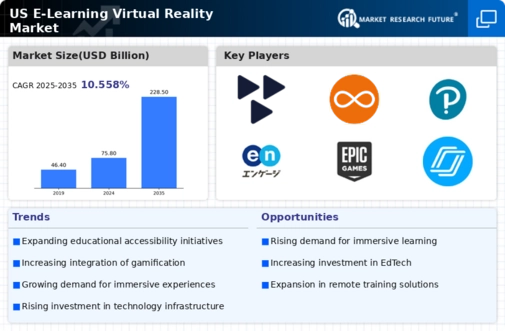US E-Learning Virtual Reality Market Summary
The US E-Learning Virtual Reality market is projected to grow significantly from 75.8 USD Billion in 2024 to 228.5 USD Billion by 2035.
Key Market Trends & Highlights
US E-Learning Virtual Reality Key Trends and Highlights
- The market is expected to experience a compound annual growth rate (CAGR) of 10.56% from 2025 to 2035.
- By 2035, the market valuation is anticipated to reach 228.5 USD Billion, indicating robust growth potential.
- In 2024, the market is valued at 75.8 USD Billion, reflecting a strong foundation for future expansion.
- Growing adoption of virtual reality technology due to increasing demand for immersive learning experiences is a major market driver.
Market Size & Forecast
| 2024 Market Size | 75.8 (USD Billion) |
| 2035 Market Size | 228.5 (USD Billion) |
| CAGR (2025-2035) | 10.56% |
Major Players
Skillsoft, ClassVR, Pearson, Engage, Epic Games, Nearpod, Udacity, Microsoft, Unity Technologies, Meta Platforms, Google, Adobe, Coursera, Strivr, Piktochart
























